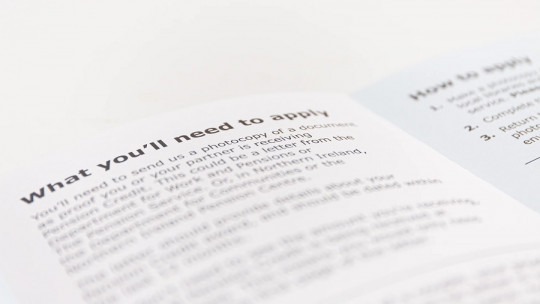
Reports are informative texts in which an investigation or a more in-depth approach to an issue of public interest is presented.
These types of texts can be shared on all types of channels and can talk about any topic, as long as it is interesting and captures the attention of the audience to which they are directed.
There are several parts of a report, which we will see in greater detail below in addition to some of the main characteristics of these texts.
Characteristics of journalistic reports
The reports are informative texts that in themselves constitute their own journalistic genre and they develop a specific topic of public interest, or they try to describe real events in as much detail as possible. The topic addressed in them can be of any type, touching on society, travel, politics, economics or sports, to name a few.
Is about planned and organized documentary works, in clearly distinguishable parts in which the journalist exposes the main theme of the same Since they expose a topic to its greatest extent, they tend to be longer and more complete than the news that we can find on the news or newspapers. In addition, they are accompanied by visual resources such as images, graphs or maps, in addition to the opinion or expert voice of testimonies, specialists or any person involved.
On the other hand, the reports bring together a series of characteristics that all relate to their parts.
1. They have a theme
The reports have a theme, which is specified in its own title, subtitles and the opening paragraph This topic can be real events, the response to a problem of social interest or a topic of human interest.
2. They spark interest
The reports arouse interest so that whoever reads, watches or listens to them remains glued to them, extending the little data they may have on the subject and satisfying their curiosity. These texts They get the attention of their audience through various resources among which testimonies and objective data cannot be missing.
3. Variety of channels
The reports are transmitted through a wide variety of broadcast channels, which coincide with those used for both traditional and more recent media
Among them we can find the written press, such as magazines and newspapers, radio, television or more modern and audiovisual media such as digital magazines or online video viewing platforms.
4. They use information sources
The reports, at least the properly done ones, They are texts that use objective information sources since their objective is to transmit real, honest and objective information These sources can be testimonies, photographs, expert statements, videos, diagrams or any other resources, resources which are used in the body of the text.
Whoever made the report may have taken certain creative licenses to present what they want to explain in a way that induces some type of opinion in their audience, but regardless of whether this is the case, a report must always be based on real data.
The parts of a report and its structure
Now that we know exactly what these types of texts are and what their main characteristics are, The time has come to look more in depth at what the parts of a report are These are essentially four parts: headline, initial paragraph or entry, body of the report and final paragraph.
1. Headline
The first part of a report is its title, as is the case with news. This headline It is accompanied by a pretitle and a subtitle in its written version although in the case of a radio report this is mentioned orally.
The headline states very briefly, in a single sentence, the information about what topic the report is going to discuss. It is, so to speak, the letter of introduction of the same, that which gives us a first impression of the topic to be discussed, for this reason it is essential that this phrase awakens the attention and interest of the reader.
2. Initial paragraph or entry
After the title, subtitle and pretitle we have a first paragraph which is a kind of micro-summary of what is going to be talked about in the report This is a paragraph that expands on the topic introduced in the title but without revealing the end of the report. The objective of this paragraph is to further awaken the curiosity that the reader or viewer already has after reading the headline.
To make it more interesting, this paragraph can include a quote that will appear in the body of the report, in addition to mentioning some of the most interesting issues of the main topic that will be presented in it. You can also mention the name of the person who is going to be interviewed, especially if he is famous or a public figure.
3. Body of the report
After the initial paragraph we enter the most important part of the report, the body of the report. In this part the investigation or exposition carried out by the journalist is exposed to its maximum extent It is in this part where the facts, data, testimonies or any other source and resource used during the completion of this work will be presented.
Within the body of the report we can find different parts depending on the paragraph we are referring to.
3.1. First paragraph or lead paragraph
The first paragraph or lead does not always have to be in a report, since it is sometimes combined with the initial paragraph. If it is within the body of the report, this paragraph gives details about the main topic, details that will have already been previously introduced in the previous paragraph It is also in this paragraph that the quote from any of those interviewed or involved in the work can be developed.
3.2. Introductory Paragraphs
The introductory paragraphs introduce us, as their name indicates, to the topic that is going to be discussed, in a limited way although with greater length than in the lead paragraph. In this paragraph The points to be followed in the report are stated and, also, the perspective that the journalist is going to take regarding the collection of information.
3.3. Contextualizing paragraphs
The contextualizing paragraphs provide us with the information necessary to understand when and in what context the events occurred, in addition to explaining the concepts necessary to understand what the report is about.
They may be more or less technical, but they are necessary for the audience to understand the topic you are dealing with and obtain the necessary information before diving into it.
3.4. Information development paragraphs
As its name indicates, the information is developed in these paragraphs. These paragraphs are the ones that occupy the highest percentage of the entire work, developing the topic and the research to the maximum. This is where we will find interviews, opinions, testimonies, graphics, archive images and the occasional quote
3.5. Conclusion Paragraph
Finally, and within the body of the report, we have the conclusion paragraph, in which The topic begins to be closed but not definitively, since it will be in the paragraphs after this that the report will be completely closed. A short summary of the topics that have been discussed is made.
4. Final paragraph
Finally we have the final paragraph in which the report closes. It is usually done in the form of a conclusion or inviting the audience to reflect on what they have just seen or read. There are different types of closure depending on the type of research and the topic addressed
We can find the final paragraph in the form of a conclusion, where the reporter quickly assumes the topic that has been discussed in the report. It can also come in the form of a resounding closing, where the report is definitively closed with one sentence or a few and you can even add a moral or brief final reflection.








